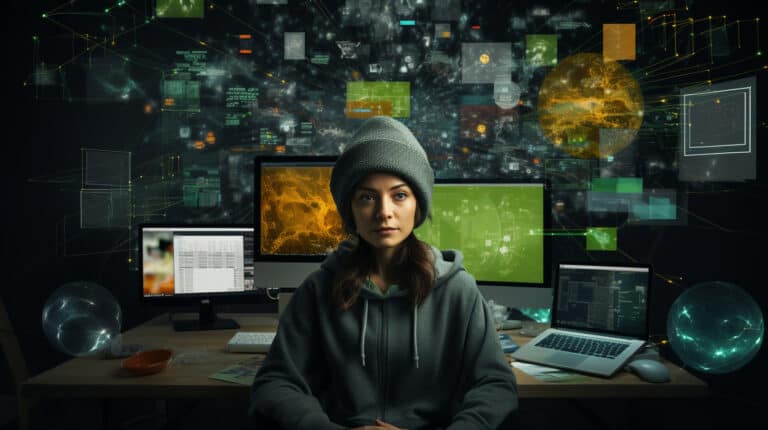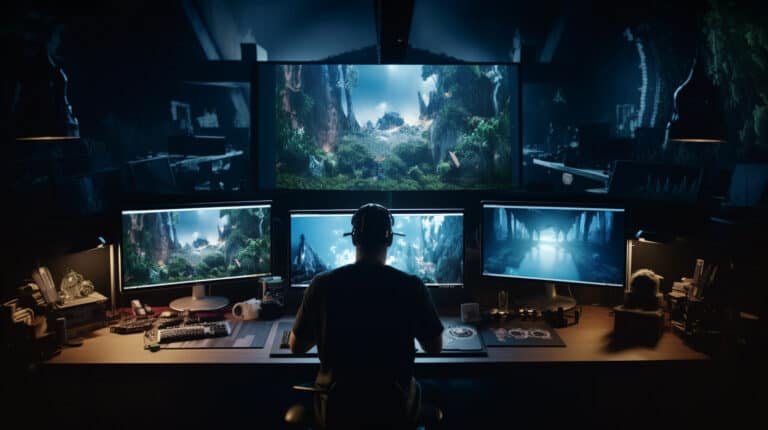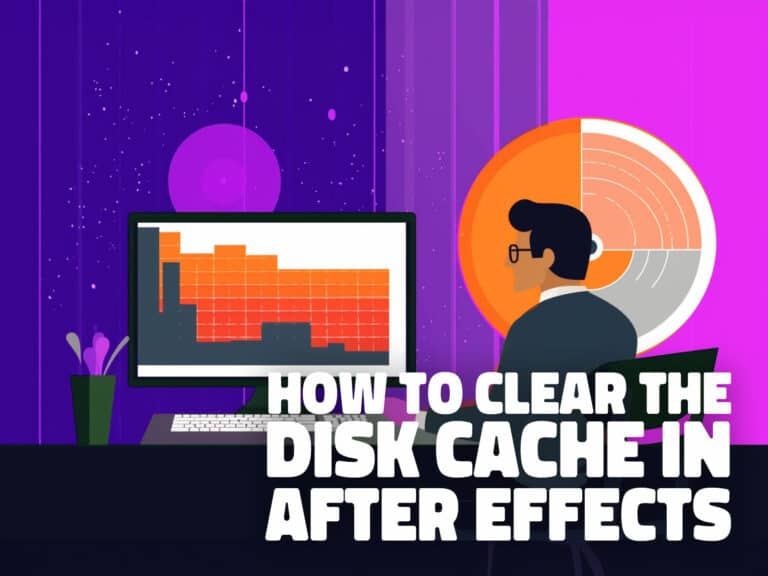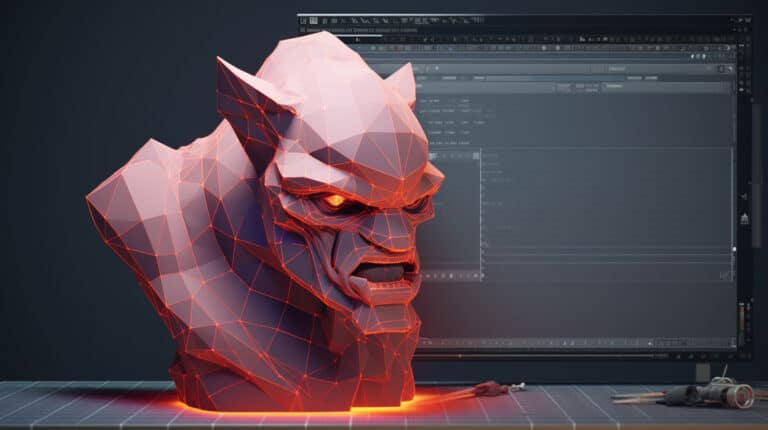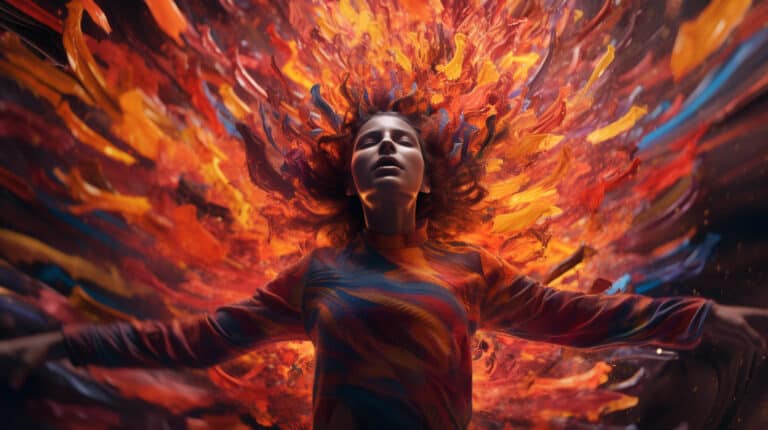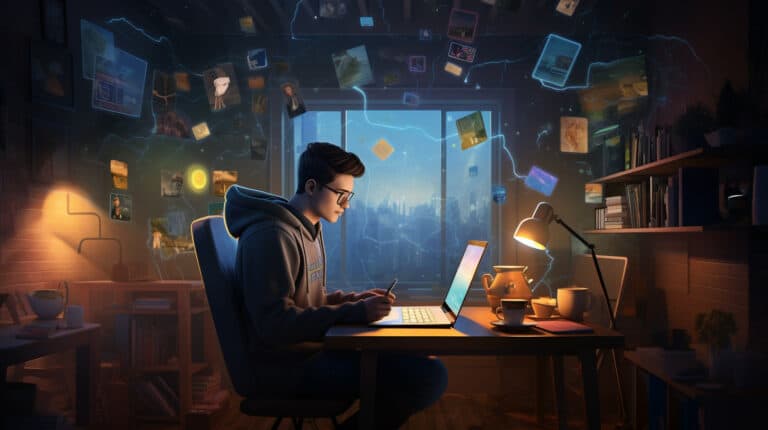Visual Effects Vs Motion Graphics: What Sets Them Apart
Do you ever wonder what the difference is between visual effects and motion graphics?
Both are exciting fields filled with creative opportunities, but there are some key distinctions between the two.
In this article, we’ll explore the difference between visual effects and motion graphics, from overlapping areas and collaboration to career paths and training. We’ll also look at the industries and applications of each.
So, let’s get started and find out what makes these two dynamic fields unique.
Key Takeaways
- Visual effects involve manipulating live-action footage to create realistic images, while motion graphics allow for the creation of animated designs and videos.
- Visual effects enhance the look of a scene, adding realism and creating new worlds, while motion graphics enhance creativity and engage audiences.
- Visual effects require software like Autodesk Maya and Adobe After Effects, while motion graphics rely on tools like Adobe Illustrator and Cinema 4D.
- Collaborations between visual effects artists and motion graphics designers can create visually stunning and captivating content, and career paths in these fields include VFX artist, motion designer, compositing artist, animator, and art director.
Visual Effects vs Motion Graphics: What Sets Them Apart
You may have heard of visual effects and motion graphics, but do you know how they differ?
Let’s explore the intricacies of these two disciplines and discover what sets them apart.
Introduction
Are you curious about the differences between visual effects and motion graphics?
In this article, we’ll explore the definitions of each, their importance in various industries, and what sets them apart.
Let’s get started!
Definition of visual effects and motion graphics
Using visual effects and motion graphics, you’re able to create stunning visuals with a high level of detail and realism. Motion graphics vs vfx and motion design vs vfx are two different but related specialties.
In motion graphics, you can create animated designs and videos. Visual effects involve the manipulation of live-action footage to create realistic images, and you can even create imaginary elements.
Through clever use of these two specialties, you can create extraordinary visuals.
Now let’s look at the importance of visual effects and motion graphics in various industries.
Importance of visual effects and motion graphics in various industries
These techniques are used in a variety of industries to create unique and impressive visuals that captivate and convince.
From film and television to advertising and video games, visual effects and motion graphics are indispensable elements of many creative projects.
They can bring characters to life, tell stories, and increase engagement with viewers.
With their power to create immersive experiences, these techniques are becoming increasingly more important in various industries.
Understanding Visual Effects
Are you curious to learn about visual effects and how they play a role in film and television?
Visual effects are a powerful tool used by professionals to create extraordinary results.
Let’s take a look at how visual effects are utilized and the various techniques used.
Definition of visual effects
Before delving into the differences between visual effects and motion graphics, it’s important to understand what visual effects are.
Visual effects (VFX) are the integration of live-action footage and computer-generated imagery (CGI) to create realistic imagery and scenes that couldn’t be filmed in real life. This includes creating simulated environments, characters, and props that are used to help tell a story, as well as enhance the visuals of a scene.
VFX can be used to create anything from a realistic ocean wave to a dramatic explosion. VFX is an integral part of modern filmmaking, adding to the realism and fantasy that we experience in movies and television.
With its ability to create stunning visuals, VFX is crucial for creating the spectacular worlds we see in films and TV shows today.
Let’s now explore the role of VFX in film and television.
Role of visual effects in film and television
You may be familiar with the amazing visuals seen in movies and television, but what you may not know is how VFX plays a big role in creating them.
Visual effects, or VFX, are used to enhance the look of a scene, giving it a realism that can’t be achieved with traditional filmmaking techniques.
From adding fire to a scene to creating apocalyptic landscapes, VFX is used to create new worlds, enhance existing settings, and make our favorite scenes more impressive.
VFX can also be used to make scenes that aren’t possible to film, like a giant monster destroying a city or a space battle happening in orbit. By blending real-world action with computer graphics, VFX can make anything happen.
From big-budget productions to indie films, VFX is a powerful tool for creating cinematic magic.
Techniques used in visual effects
You can create amazing images through a variety of visual effects techniques!
CGI, compositing, matte painting, rotoscoping, and matchmoving are all used to create breathtaking visual effects.
Let’s take a look at how these techniques can be used to make your work stand out.
CGI (Computer Generated Imagery)
When it comes to creating believable and realistic visuals, Computer Generated Imagery (CGI) is an essential tool for visual effects. It allows filmmakers to create visuals that look real and true to life without the need for actual physical props or sets.
CGI can be used to create entire worlds, characters, and even natural phenomena that can be used to create a visually stunning final product. CGI is an incredibly versatile tool and can be used to create anything imaginable.
With it, you can tell stories in ways that you never imagined before. From spectacular sci-fi worlds to awe-inspiring fantasy lands, CGI is the ultimate tool for visual effects.
Compositing
After creating realistic visuals with CGI, the next step in visual effects is compositing, which combines multiple elements into one image. It’s like a jigsaw puzzle. | Images | Colours | Effects | | — | — | — | | Live action footage | Shading | Blending | | CG elements | Enhancing | Tracking | | Matte painting | Lighting | Rotoscoping | Compositing is an intricate process that can be used to create mesmerizing visuals. It’s a powerful tool for filmmakers.
Matte painting
Following on from compositing, matte painting is another technique used in visual effects to create an illusion of depth and realism. By combining two-dimensional images with three-dimensional elements, matte painters can create breathtaking and believable scenes.
This style of art allows filmmakers to create the impossible, and bring faraway and fantastic locations to life. The art of matte painting is used to create entire backgrounds, vistas, and scenes that weren’t filmed on a real location, or are too expensive to build in real life.
Matte painting is an invaluable tool to the VFX industry, adding an amazing level of detail and realism to big-budget films.
Rotoscoping
Building on from the technique of matte painting, rotoscoping is another visual effects technique used to create realistic scenes. It involves layering images, tracing over each frame of a live-action film, and then adding in computer-generated elements.
Here are some key features of rotoscoping:
- It allows for realistic and seamless integration of live-action and animation
- It can be used to create an array of effects, such as slow motion or motion blurs
- It allows for greater control over the compositing of elements.
Rotoscoping is an incredibly powerful visual effects tool that provides filmmakers with the ability to create and manipulate realistic and engaging scenes.
Matchmoving
You may have heard of matchmoving and may be wondering what it is and how it fits into visual effects. Matchmoving is a technique used to track the motion of a live-action object in 3D space. It allows for the integration of CG elements into live-action shots. | |
| Benefits: | Drawbacks: |
|---|---|
| Precision | Time-consuming |
| Flexibility | Expensive |
This powerful tool allows for greater creativity, precision, and flexibility in visual effects, leading to stunning results. Matchmoving is a must-have for any VFX artist.
Understanding Motion Graphics
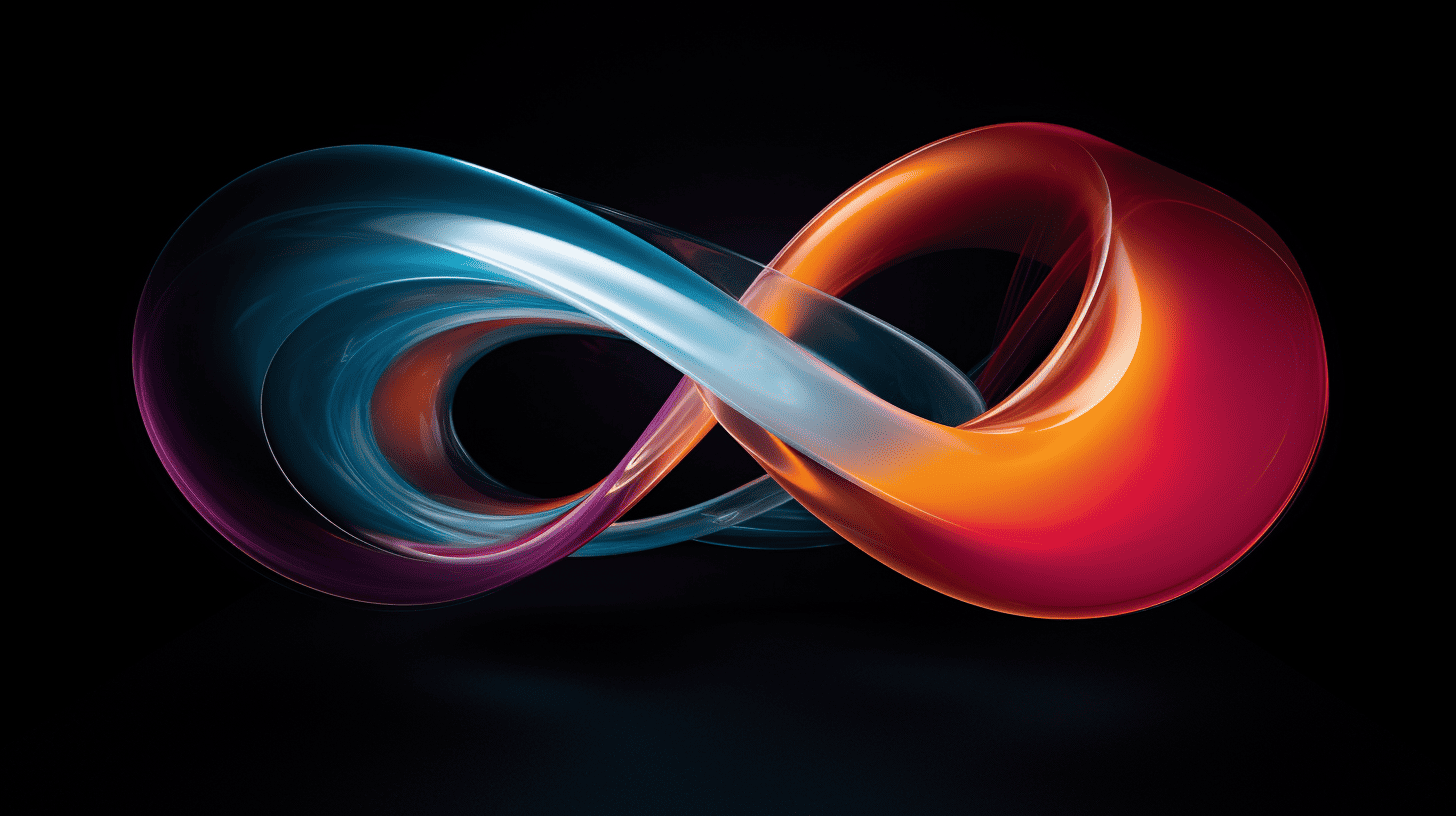
Are you wondering what motion graphics are and what they’re used for?
Let’s explore how motion graphics are used in various industries and the techniques used to create them.
From creating dynamic visuals to telling stories, motion graphics are an amazing tool that can really make your projects stand out!
Definition of motion graphics
Digging into motion graphics, let’s break down what it means to get a better grasp of it.
Motion graphics is a combination of animation and design, used to create art and visuals that bring to life motion and movement. It’s a powerful tool for creating engaging visuals for a variety of platforms.
Here’s an overview of what makes motion graphics unique:
- It uses a combination of animation and graphic design
- It creates visuals by combining objects with motion
- It’s used to create engaging visuals for multiple mediums
Motion graphics is a great way to create captivating visuals and tell stories in a creative way. With motion graphics, you can create visuals that are both impactful and eye-catching. It’s an invaluable tool for any creative professional.
Role of motion graphics in various industries
By exploring the role of motion graphics in various industries, you can gain a deeper understanding of this powerful creative tool.
Motion graphics are used in many industries, from advertising and marketing to education and entertainment. They’re used to create striking visuals and captivate audiences.
In the advertising industry, motion graphics can be used to create memorable campaigns that stand out from the competition.
In education, motion graphics can be used to explain complex concepts in an engaging way.
In the entertainment industry, motion graphics can be used to create stunning visuals for film, television, and gaming.
Motion graphics can also be used to create interactive experiences, such as virtual reality and augmented reality applications.
Motion graphics are a powerful and versatile tool that can be used to create beautiful visuals and powerful experiences.
Techniques used in motion graphics
You have the power to create stunning motion graphics using key techniques like animation, typography, illustration, and video editing.
Let’s take a look at how these tools combine to create dynamic visuals that separate motion graphics from visual effects.
Animation
When it comes to motion graphics, animation plays a key role in creating a visually stimulating experience. It adds dynamism to the visuals, creating movement and energy. It also creates a story and establishes a sense of connection, helping to convey a message or narrative. Additionally, animation helps to draw the viewer into the world of the motion graphic, making it more immersive and engaging.
Animation, in the context of motion graphics, offers a wide range of possibilities that can be tailored to the message and visual style of the project. It has the power to captivate an audience and engage them in a unique way. By combining animation with other elements such as typography, sound, and visual effects, motion graphics can be truly effective and memorable.
Typography
Building on the use of animation in motion graphics, typography is another technique that can help to effectively convey a message. To create an engaging experience, designers combine text, typeface, and size to tell a story.
Typography is an art form, allowing designers to express their creativity. By mixing fonts, colors, and sizes, they can create a powerful impact. Professional motion graphic designers use typography to create a unique, captivating experience that entices viewers.
Whether used in a video, animation, or a website, typography can make an impact. With its potential to be both creative and engaging, it’s no wonder why typography is a popular choice for motion graphics.
Illustration
In addition to typography, illustration is also used in motion graphics to further enhance visuals and convey the message. Illustration can be used to create unique characters, visual metaphors, and animation sequences.
Illustrations are engaging and provide a great opportunity to express ideas in a creative and uplifting way. They help to tell a story with clarity, conciseness, and precision.
Video editing
Once you’ve mastered the illustration techniques used in motion graphics, you can move on to video editing to further enhance your work. Video editing involves manipulating and arranging video clips in a way that creates a cohesive, visually compelling video.
It can include adding sound, narration, special effects and transitions to add to the overall production value.
It’s important to understand the basics of editing and how it works within motion graphics, as it can help you create more dynamic and eye-catching visuals.
With the right knowledge, you can achieve amazing results. Get creative and have fun!
Key Differences between Visual Effects and Motion Graphics
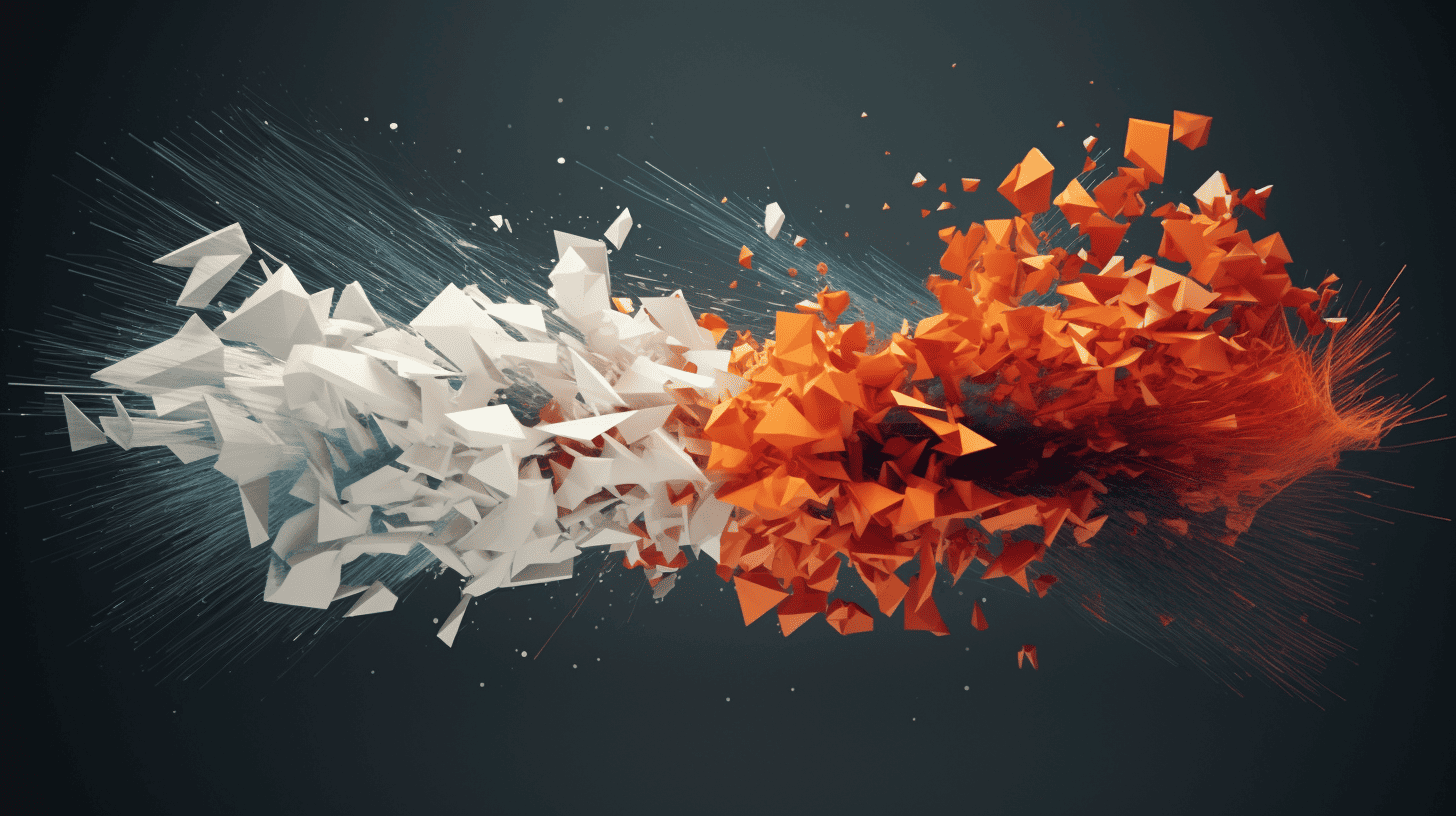
Do you ever wonder what sets Visual Effects and Motion Graphics apart?
In this article, we’ll explore the key differences in purpose and application, tools and software used, and the skillset and expertise required.
Let’s get started!
Purpose and application
Are you interested in learning the key differences between visual effects and motion graphics?
Visual effects can create amazing, realistic, or fantastical elements.
Motion graphics, on the other hand, are great for conveying information and making visuals more engaging.
Let’s explore how these two disciplines are unique!
Visual effects for creating realistic and fantastical elements
You can use visual effects to create realistic and fantastical elements that wouldn’t be possible with motion graphics. From the addition of special lighting and textures to the integration of live-action footage, VFX can generate stunning, photo-realistic environments. VFX can also manipulate physical objects for dynamic scenes and add realistic, believable special effects. These tools allow you to craft immersive stories with remarkable visuals.
With this, it’s easy to see why VFX is used to create memorable, emotionally engaging content.
Transitioning to the next section, let’s explore how motion graphics can be used to convey information and enhance visual appeal.
Motion graphics for conveying information and enhancing visual appeal
Whereas visual effects are primarily used to create realistic and fantastical elements, motion graphics are typically employed for conveying information and enhancing visual appeal.
With motion graphics, you can effectively communicate complex ideas in an accessible way that’s both visually appealing and informative. It also provides an interactive way to engage viewers and keep them hooked.
Motion graphics are a great way to add depth and interest to any project, making it stand out from the crowd. They can be used to create anything from attention-grabbing logos to thought-provoking infographics.
Tools and software used
Are you wondering what sets Visual Effects and Motion Graphics apart? Look no further – one of the biggest differences between the two lies in the tools and software used.
Visual effects require powerful software like Autodesk Maya and Adobe After Effects, while motion graphics rely on tools like Adobe Illustrator and Cinema 4D.
Visual effects software (e.g., Autodesk Maya, Adobe After Effects)
Using specialized tools and software like Autodesk Maya and Adobe After Effects can help you create stunning visual effects and motion graphics. They offer a range of features such as:
- Complex 3D modeling and animation capabilities
- Motion tracking and compositing capabilities
- Extensive library of effects and presets.
These powerful tools enable you to create amazing visuals and bring your ideas to life. With the right approach, the possibilities are endless.
Transitioning to the next section, let’s explore motion graphics software such as Adobe Illustrator and Cinema 4D.
Motion graphics software (e.g., Adobe Illustrator, Cinema 4D)
Adobe Illustrator and Cinema 4D are two popular motion graphics software programs used to create stunning visuals for videos, films, and advertisements. Both tools provide a variety of features and capabilities that are essential for creating motion graphics.
Illustrator specializes in vector graphics and drawing that can be used for logos, typography, and illustrations.
Cinema 4D offers 3D modeling, animation, and rendering capabilities, making it a great choice for creating dynamic effects.
Both programs have powerful tools and can be used to create motion graphics that are both creative and professional.
Skillset and expertise required
Do you want to create stunning visuals for your projects? You’re in luck!
Visual effects artists and motion graphics designers both have the skills and expertise to bring your vision to life, although each has its own unique set of specialities.
Let’s take a look at the key differences between them.
Visual effects artists specializing in 3D modeling, texturing, and rendering
What skillset and expertise do visual effects artists specializing in 3D modeling, texturing, and rendering need to possess in order to differentiate them from motion graphics artists?
They must have:
- Artistic vision and technical proficiency
- Ability to create stunning, believable images
- Attention to detail and a strong understanding of the entire production process.
Visual effects artists must be passionate and creative in order to excel in this field and create stunning visuals.
Motion graphics designers skilled in animation, typography, and video editing
Second on the list of key differences between visual effects and motion graphics is the skillset and expertise required of motion graphics designers. This includes animation, typography, and video editing. Motion graphics designers must possess a unique combination of creative and technical skills, as well as the ability to think outside the box. They must be able to use their creativity and technical know-how to create stunning visuals that are able to engage and captivate audiences.
With the right skillset, motion graphics designers are able to create powerful stories that draw viewers in and keep them engaged.
With this, we transition into the next section about overlapping areas and collaborations.
Overlapping Areas and Collaborations

It’s exciting to explore the fascinating overlaps between visual effects and motion graphics!
What creative collaborations can be made when these two disciplines intersect?
Let’s take a closer look at the possibilities.
Instances where visual effects and motion graphics intersect
You can create amazing visuals by combining the strengths of visual effects and motion graphics!
There are several ways to collaborate and use each of these specialties to enhance the other.
One way is by integrating motion graphics into visual effects shots. This can add dynamic elements and enhance the overall look and feel of the effects.
Another way is by using visual effects in motion graphics projects. This allows for the creation of realistic and immersive environments, adding depth and realism to the motion graphics.
By combining these two disciplines, you can create visually stunning and captivating content that grabs the attention of your audience.
Integration of motion graphics into visual effects shots
When it comes to combining motion graphics with visual effects shots, there are many opportunities for collaboration and creative problem solving.
Here are some of the advantages of this combination:
- Increased visual impact
- Increased flexibility
- Cost savings.
This integration allows for the creation of stunning visuals, with increased production value and budget-friendly results.
It’s an inspiring way to achieve powerful results, making it a win-win for everyone.
Use of visual effects in motion graphics projects
By exploring the overlap between visual effects and motion graphics, you can create exciting collaborations that amplify the impact of each.
Use visual effects to enhance motion graphics projects with realistic lighting, textures, and other elements.
Add motion graphics to VFX shots to create dynamic movement, complex transitions, and awesome special effects.
Both techniques can be used to create powerful visuals that are more than the sum of their parts.
Embrace this potential and script, storyboard, and execute unique projects that leave a lasting impression.
Collaborations between visual effects artists and motion graphics designers
You have the opportunity to join forces with the best of both worlds: visual effects and motion graphics.
Take advantage of the potential for collaboration between these two disciplines when it comes to artistry in film, television, and advertising.
Let’s explore how to bring the best of both worlds together.
Joint projects in film and television
Collaborations between visual effects artists and motion graphics designers are commonplace in film and television projects.
Here are the ways they overlap:
- Combining visuals to create a unique aesthetic
- Leveraging technology to create dynamic scenes
- Enhancing storytelling through motion media
Working together, these professionals can create stunning visuals that bring stories to life. They push the boundaries of what’s possible with technology and bring imagination to life on-screen.
Cross-disciplinary collaborations in advertising and marketing
Often, visual effects artists and motion graphics designers collaborate to create unique visuals for advertising and marketing projects. By combining their talents, they bring to life eye-catching visuals that are both creative and impactful.
Their joint efforts can add a fresh, modern edge to campaigns, adding depth and texture that captures the attention of customers.
Working together, they bring out the best in each other, combining their skills to create truly memorable visuals that set campaigns apart and drive results.
Industries and Applications
Are you curious about the industries and applications of visual effects and motion graphics?
Let’s explore how these creative tools are being used in film and television, advertising and marketing, and other industries.
From stunning visuals in movies to captivating graphics in commercials, these techniques are everywhere!
Visual effects in film and television
You’ve seen it before: the blockbuster movies with their spectacular and visually stunning CGI-heavy scenes; the TV shows with their captivating and episodic storytelling.
Visual effects and motion graphics have become an important part of both film and television, but what exactly sets them apart?
Let’s explore.
Blockbuster movies and CGI-heavy scenes
You’re probably familiar with the incredible visual effects and motion graphics used in blockbuster movies and CGI-heavy scenes. From lifelike characters to simulated environments, these techniques can create spellbinding visuals that transport viewers into another world.
Here are some of the key differences between VFX and motion graphics:
- VFX are used to add realism to shots, while motion graphics are used to convey information
- VFX are often used to create objects or characters that don’t actually exist, while motion graphics are used to animate existing objects
- VFX are used to create a sense of visual immersion, while motion graphics are used to create visual interest.
Whether you’re watching a movie or admiring a product ad, you can always appreciate the power of these effects.
TV shows and episodic storytelling
Exploring the industries and applications of visual effects in film and television, you’ll find they play an integral role in creating captivating TV shows and episodic storytelling.
VFX and motion graphics are used to enhance stories, create realistic worlds, and give viewers an immersive experience. From action-packed fight scenes to subtle background details, these effects can make or break a show.
With the right techniques, these effects can bring stories to life, making them more engaging and entertaining.
Motion graphics in advertising and marketing
Are you looking for an effective way to reach your target audience?
Motion graphics in advertising and marketing are an excellent choice!
From branding and logo animations to explainer videos and product demonstrations, motion graphics can help you engage with customers and influence their decisions.
Branding and logo animations
Two major industries that leverage the power of motion graphics are advertising and marketing. Branding and logo animations offer a unique way to capture attention and create an impact. Here’s why it works:
- It’s eye-catching: Animated logos and branding stand out and are memorable.
- It’s versatile: Animations can be used across multiple platforms from TV ads to web banners.
- It’s engaging: It helps trigger a powerful emotional response and increases brand loyalty.
Motion graphics provide a powerful tool for businesses to reach their customers. From creating the perfect logo animation to crafting a memorable message, motion graphics help brands connect with their customers and stand out from the competition.
Explainer videos and product demonstrations
Building on the use of motion graphics in branding and logo animations, explainer videos and product demonstrations are also popular in advertising and marketing. They capture attention and are used to demonstrate a product or service to potential customers. They can be used to explain concepts in an engaging, entertaining way.
Explainer videos often have motion graphics and animations to help explain complex topics. Product demonstrations are an effective way to show potential customers how a product or service works. Motion graphics can help make a product demonstration more engaging and memorable.
Other industries utilizing visual effects and motion graphics
Are you curious to know about the industries and applications of visual effects and motion graphics beyond the traditional realms of advertising and marketing?
From gaming to architecture and real estate, education and e-learning, these powerful tools are revolutionizing the way we communicate and engage with each other.
Let’s explore how!
Gaming industry
Though visual effects and motion graphics are both integral parts of the gaming industry, they’re distinct from one another.
Here are some key differences:
- Visual Effects are computer-generated imagery used to create realistic environments, create characters, and more.
- Motion Graphics are used to communicate messages through visuals and animation.
Both are used to build immersive gaming experiences that draw players in and keep them engaged.
Visual effects and motion graphics bring gaming to life!
Architecture and real estate
You may not think of visual effects and motion graphics as applicable to architecture and real estate, but they can both be powerful tools.
From 3D renderings and animations to virtual reality tours, these technologies can be used to showcase properties in a unique and captivating way.
With the help of VFX and motion graphics, architects can create realistic simulations to test out designs and explore the possibilities.
It’s an exciting and efficient way to plan and market real estate, giving potential buyers a clear picture of what they can expect.
Education and e-learning
Continuing from architecture and real estate, educational institutions are also using visual effects and motion graphics to create exciting and engaging e-learning materials.
Here are three ways these techniques are transforming education:
- Making the learning process more interactive and engaging
- Enhancing the aesthetics and visuals of educational materials
- Allowing educators to create and deliver unique experiences.
Visual effects and motion graphics are helping create a bright future for education, one full of enriching and immersive experiences.
Career Paths and Opportunities
If you’re interested in a career in the visual effects and motion graphics industry, there are many exciting opportunities just waiting for you.
Pursuing either of these paths can lead to a rewarding and fulfilling career.
From job prospects and demand to career paths, you can be sure to find success in this growing field.
Visual effects career paths
If you’re interested in pursuing a career in visual effects, you have a variety of options available to you.
From becoming a VFX artist or VFX supervisor to a VFX producer, there are many exciting paths for you to explore.
Each one has its own unique set of rewards and challenges, so don’t be afraid to get creative and find the perfect fit for you!
VFX artist
For many aspiring filmmakers and graphic designers, becoming a VFX artist is an attractive career path that offers plenty of exciting opportunities:
- Create realistic effects using a variety of tools
- Work with a team to bring your vision to life
- Utilize the latest technology to create stunning visuals
VFX artists have the potential to make a lasting impression on any project. With the right mindset and dedication to their craft, they can make a real difference in the industry.
Transitioning into the role of a VFX supervisor is the next step for any experienced VFX artist.
VFX supervisor
As any experienced VFX artist knows, becoming a VFX supervisor is the next step in the career path, offering even more opportunities to create stunning visuals and bring your vision to life.
Working as a VFX supervisor, you get to direct a team of talented artists, overseeing the entire creative process from pre-production to post-production. You’ll have the unique opportunity to shape the look and feel of a project, and bring it to life in a way that will captivate audiences.
With the right skills, attitude, and experience, you can lead a successful and rewarding career as a VFX supervisor.
Now let’s explore the exciting opportunities that come with being a VFX producer.
VFX producer
For those seeking to explore a career in visual effects, the role of a VFX producer is one of the most rewarding and exciting opportunities available. They specialize in overseeing the entire production process, from pre-production to post-production.
These professionals must have a strong technical background, excellent problem-solving skills, and a passion for the visual effects industry. By harnessing these skills, VFX producers can create lasting and stunning visual effects. With this knowledge, they can make the impossible possible and open up a world of creative possibilities.
Their work is truly inspiring and offers a unique opportunity to make a difference in the world of film and TV.
Transitioning into motion graphics career paths is the next step in this exciting journey.
Motion graphics career paths
Are you interested in a career in motion graphics?
If so, you have a variety of exciting roles to choose from, such as motion graphics designer, motion graphics animator, and art director.
Let’s explore what each of these roles entail and how they can help you achieve success in this exciting field.
Motion graphics designer
If you’re interested in becoming a motion graphics designer, there are a few career paths and opportunities to consider:
- Design and build motion graphics for web videos, television, film, and more
- Create animation for interactive media, such as apps, games, and websites
- Develop motion graphics for advertisements, event shows, and other visual projects
It’s an exciting field to explore, with many different possibilities. From there, you can move into motion graphics animator roles, where you’ll be able to bring your designs to life.
Motion graphics animator
After exploring the various opportunities of motion graphics design, it’s time to delve into the career paths of a motion graphics animator.
Becoming a motion graphics animator means you’ll have the chance to create stunning visuals that are both entertaining and engaging. You’ll be able to use your skills to create animations, videos, and other graphic design elements that will be used in a variety of media.
You’ll need to have a strong understanding of graphics and animation software, as well as a good eye for design. With the right training and experience, you can become an in-demand motion graphics animator and work in the film, television, and advertising industries.
Art director
If you’re looking to pursue a career in motion graphics, becoming an art director is one option. With this role, you’ll have the chance to:
- Lead creative teams and projects
- Define the aesthetic of motion graphics
- Build relationships with clients and vendors
It’s a rewarding position with lots of potential for growth. You’ll get to combine your creative skills and business acumen to bring projects to life.
Job prospects and demand in the industry
When it comes to job prospects and opportunities in the visual effects and motion graphics industries, you can expect to find a wide range of possibilities. Both disciplines are highly sought after in the film, television, and advertising industries, offering a variety of roles and levels of expertise. | Visual Effects | Motion Graphics |
| — | — |
|---|---|
| Storyboarding | Animation |
| Lighting | Storyboarding |
| Compositing | Editing |
| 3D Modeling | 3D Modeling |
The demand for professionals in these fields is consistently high, and the potential for career advancement is strong. With the right training and education, there are tremendous opportunities to make a mark in the industry. There are also a number of freelance opportunities available for those who prefer the flexibility of a freelance career. Transitioning into the next section about ‘training and education’, it is clear that the visual effects and motion graphics industries offer an abundance of career prospects.
Training and Education
Are you looking to get into visual effects or motion graphics?
You can set yourself up for success by exploring the educational programs and courses available in both fields.
Investing in the right training and staying up-to-date with industry trends is essential to staying ahead in the game!
Educational programs and courses for visual effects
You can jumpstart your career in visual effects with the right educational programs and courses. Whether you’re looking for online tutorials or a full degree program, there are plenty of options to choose from that can help you develop the skills you need.
Investing in yourself and the right training can lead to a successful and rewarding career in visual effects.
Degree programs in visual effects
If you’re looking to pursue a career in visual effects, finding the right degree program is key. To get started, consider the following:
- Researching accredited institutions for their visual effects programs
- Examining the coursework and faculty for the best fit
- Deciding which program will best equip you for your career goals.
Each program offers a unique set of strengths and benefits, so take the time to explore your options. With the right program, you’ll be ready to take the next step towards success.
Now, let’s look into online tutorials and workshops.
Online tutorials and workshops
With hundreds of online tutorials and workshops available, you can easily find the perfect educational program or course to help you hone your visual effects skills. From beginner to expert level, these programs provide the knowledge and tools to create stunning visuals. | Online |
| ———- | ——— |
|---|---|
| Benefits | No commute, get real-time feedback, progress at your own pace |
| Cost | Varies |
| Time | Flexible |
| Accessibility | Worldwide |
| Quality | High standards |
Learn from the best and take your visual effects skills to the next level with the help of online tutorials and workshops. Get ready to revolutionize the way you create!
Educational programs and courses for motion graphics
Are you looking to start a career in motion graphics?
You’re in luck, as there are plenty of educational opportunities available to help you get the training and certifications you need.
From degree programs to online courses, there are options out there to help you achieve your goals.
Degree programs in motion graphics
You can pursue a degree in motion graphics through various programs and courses. Here are the main benefits:
- Get specialized training in motion graphics techniques
- Expand your creative skillset
- Access to the latest motion graphics software
A degree in motion graphics is the perfect way to jump start your career and stay ahead of the competition. With the right training and support, you’ll be ready to take on any challenge.
And now, let’s look at the options for online courses and certifications.
Online courses and certifications
While you can find many online courses and certifications for motion graphics, they differ significantly from traditional visual effects programs.
Explore the features and advantages of virtual learning to stay ahead, such as flexible schedules, cost savings, and access to the latest industry trends.
These can help you get the most out of your motion graphics education and career.
Plus, it’s important to keep learning and stay up to date on the ever-evolving industry.
Importance of continuous learning and staying updated with industry trends
Staying on top of industry trends and training regularly are key if you’re looking to stay competitive in the world of visual effects and motion graphics. To ensure you remain on the cutting edge of this ever-evolving field, consider the following:
- Investing in the latest tools and technologies
- Taking online courses or joining professional organizations
- Networking to connect with other professionals
Continuous learning and staying up-to-date with the latest industry trends is essential for staying ahead in this field. By doing so, you can remain competitive and gain confidence in your skillset.
Embrace the challenge of learning new things and take the necessary steps to succeed.
Conclusion
It’s clear that visual effects and motion graphics are both important disciplines with distinct differences.
By understanding the differences between the two, we can better appreciate the creative possibilities unlocked by both.
As technology continues to evolve, we can look forward to new trends and advancements that will help unlock our imagination.
Recap of the key differences between visual effects and motion graphics
To sum up, the main difference between visual effects and motion graphics lies in the way each is used to create a desired effect. Visual effects involve the use of 3D animation, practical effects, and compositing, while motion graphics use 2D animation, kinetic typography, and video editing.
Here is a quick recap of the key differences:
- Visual effects are used for creating realistic and believable scenes, while motion graphics are used mainly for conveying information and ideas.
- Visual effects are designed to make scenes look more realistic, while motion graphics are used to enhance the aesthetic of a video.
- Visual effects are used to enhance the visual impact of a scene, while motion graphics provide a visual representation of information.
Both visual effects and motion graphics are important disciplines in many industries. Each has its own unique use case and can be used to create engaging visuals that captivate viewers.
Transitioning to the next section, it’s important to understand the importance of both disciplines in various industries.
Importance of both disciplines in various industries
Building on the differences between visual effects and motion graphics, it’s evident that both disciplines are important in various industries. The table below outlines the key industries that can benefit from these services and how they can be applied:
| Industry | Visual Effects | Motion Graphics |
|---|---|---|
| Film | Compositing and Animation | Titles and Trailers |
| Gaming | 3D Modeling and Animation | Character Design |
| Advertising | Color Correction and Retouching | Logo Design and Storyboarding |
| Architecture | Virtual Sets and 3D Rendering | Animations and Video Editing |
| Education | Special Effects and Augmented Reality | Infographics and Motion Graphics |
From film to gaming, advertising to architecture, and education to virtual reality, visual effects and motion graphics can bring any project to life. These services are the perfect combination of technology and artistry, and are essential tools in any industry.
Future trends and advancements in visual effects and motion graphics
As technology continues to evolve, so too do the future trends and advancements in visual effects and motion graphics. Here are some of the more exciting developments that are on the horizon:
- Realistic 3D modeling that’s nearly indistinguishable from the real world
- Automation and artificial intelligence to create more efficient design processes
- Expanded use of motion graphics in virtual and augmented reality applications.
The possibilities for visual effects and motion graphics are seemingly endless, all thanks to the ever-evolving technology. It’s an exciting time for creatives, as the boundaries of what can be achieved are being pushed further with each passing day.
The future looks bright for anyone interested in the visual arts, as these advancements will open up new opportunities and help them create even more stunning visuals.
Frequently Asked Questions
How Much Does a Career in Visual Effects or Motion Graphics Pay?
A career in visual effects or motion graphics can pay very well! With determination and skill you can make a great living in this field. It’s a rewarding and exciting career path. So why not take the plunge and give it a shot?
What Is the Best Way to Get Started in Visual Effects or Motion Graphics?
To get started in visual effects or motion graphics, start by building your portfolio. Learn the basics and experiment with different techniques. Get creative and keep working until you find your style. You can do it!
What Type of Software Do Visual Effects and Motion Graphics Professionals Use?
You can get started with motion graphics or visual effects by using software like Adobe After Effects, Cinema 4D, and Nuke. These tools can help you create stunning visuals with ease!
How Long Does It Typically Take to Become Proficient in Visual Effects or Motion Graphics?
Becoming proficient in visual effects or motion graphics takes time and dedication. It’s different for everyone, but with consistent practice and commitment you can make great progress. You’ll be surprised at what you can achieve!
What Are the Key Differences Between Visual Effects and Motion Graphics in Terms of Job Responsibilities?
You have the chance to create exciting visuals and motion graphics. Visual effects involves manipulating existing footage, while motion graphics involves creating animation and graphics from scratch. Both roles are challenging and rewarding.
Conclusion
No matter which path you choose, visual effects or motion graphics, you’ll be working with powerful tools to create stunning visuals. You’ll be part of a vibrant and growing industry, and have the chance to collaborate with other creative professionals.
With the right training, you can have a successful career in either field, and make a real impact on the visual media landscape.
So go ahead and start exploring what visual effects and motion graphics have to offer today!


